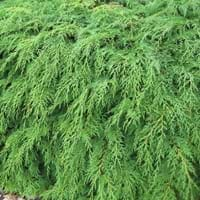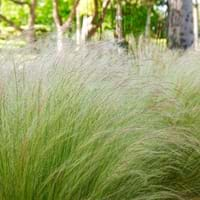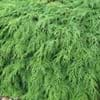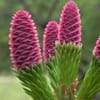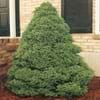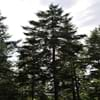Life Span
Perennial
Perennial
Type
Needled or Scaled Evergreen
Grass
Origin
Russia/Siberia
Southwestern United States, Texas, Mexico
Types
Not available
Not Available
Habitat
Cold Regions
driveways, open Woodlands, Roadsides, Rocky areas, Slopes, tree wells
USDA Hardiness Zone
4-7
6-10
Sunset Zone
A3, 1a, 1b, 2a, 2b, 3a, 3b, 4, 5, 6, 7, 8, 9, 10, 14, 15, 16, 17
2b, 3a, 3b, 4, 5, 6, 7, 8, 9, 10, 11, 12, 13, 14, 15, 16, 17, 18, 19, 20, 21, 22, 23, 24
Habit
Spreading
Clump-Forming
Flower Color
Dark Green
Not Available
Flower Color Modifier
Bicolor
Bicolor
Fruit Color
Non Fruiting Plant
Non Fruiting Plant
Leaf Color in Spring
Green
Green, Light Green
Leaf Color in Summer
Green, Dark Green
Light Green
Leaf Color in Fall
Green, Dark Green, Copper
Green, Yellow green, Tan
Leaf Color in Winter
Purple, Sienna, Burgundy, Bronze
Green, Yellow green, Gold, Tan
Leaf Shape
Scale-like imbricate
Linear
Plant Season
Spring, Summer, Fall, Winter
Spring, Summer, Fall, Winter
Sunlight
Full Sun, Partial Sun, Partial shade
Full Sun, Partial Sun
Type of Soil
Clay, Loam
Clay, Loam, Sand
The pH of Soil
Acidic, Neutral
Acidic, Neutral, Alkaline
Soil Drainage
Well drained
Well drained
Bloom Time
Not Available
Early Summer, Summer
Tolerances
Shade areas
Drought
Where to Plant?
Ground
Ground
How to Plant?
Seedlings, Semi-hardwood cuttings
Seedlings
Plant Maintenance
Low
Medium
Watering Requirements
Water during dry weather, Water occasionally
Do not water excessively
In Summer
Lots of watering
Lots of watering
In Spring
Moderate
Moderate
In Winter
Average Water
Average Water
Soil pH
Acidic, Neutral
Acidic, Neutral, Alkaline
Soil Type
Clay, Loam
Clay, Loam, Sand
Soil Drainage Capacity
Well drained
Well drained
Sun Exposure
Full Sun, Partial Sun, Partial shade
Full Sun, Partial Sun
Pruning
Remove damaged leaves, Remove dead branches, Remove dead leaves
Requires little pruning
Fertilizers
slow-release fertilizers
Apply 12-6-6 fertilizer
Pests and Diseases
No serious insect or disease problems
Not Available, Red blotch
Plant Tolerance
Shade areas
Drought
Flowers
Insignificant
Showy
Flower Petal Number
Single
Single
Foliage Texture
Fine
Fine
Foliage Sheen
Matte
Matte
Attracts
Bees, Butterflies, Hummingbirds
Not Available
Allergy
Not Available
Not Available
Aesthetic Uses
Cottage Garden, Ground Cover
Landscape Designing, Showy Purposes, small hedge
Beauty Benefits
Not Available
Not Available
Environmental Uses
Not Available
Air purification
Medicinal Uses
Not Available
No Medicinal Use
Part of Plant Used
Not Available
Leaves
Other Uses
Used for bedding in gardens
Used as Ornamental plant
Used As Indoor Plant
No
No
Used As Outdoor Plant
Yes
Yes
Garden Design
Alpine, Edging, Feature Plant, Foundation, Groundcover, Mixed Border, Rock Garden, Wall
Dried Flower / Everlasting, Container, Foundation, Mixed Border, Rock Garden / Wall
Botanical Name
MICROBIOTA decussata
NASSELLA tenuissima
Common Name
Microbiota, Siberian carpet cypress, Russian arbor vitae
Finestem Needlegrass, Mexican Feather Grass
In Hindi
माइक्रोबायोटा
Mexican Feather Grass
In German
Mikrobiota
Mexikanische Federgras
In French
microbiote
Mexicaine Herbe Feather
In Spanish
microbiota
Pluma hierba mexicana
In Greek
μικροχλωρίδας
Μεξικού Αστραπή Grass
In Portuguese
microbiota
Mexican Pena Relva
In Polish
mikroflory
Mexican Feather trawy
In Latin
Microbiota
Mexicanus Pluma Grass
Phylum
Tracheophyta
Magnoliophyta
Class
Pinopsida
Liliopsida
Family
Cupressaceae
Poaceae
Genus
Microbiota
Nassella
Clade
Not Available
Angiosperms, Commelinids, Monocots
Tribe
Not Available
Stipeae
Subfamily
Not Available
Not Available
Season and Care of Microbiota and Mexican Feather Grass
Season and care of Microbiota and Mexican Feather Grass is important to know. While considering everything about Microbiota and Mexican Feather Grass Care, growing season is an essential factor. Microbiota season is Spring, Summer, Fall and Winter and Mexican Feather Grass season is Spring, Summer, Fall and Winter. The type of soil for Microbiota is Clay, Loam and for Mexican Feather Grass is Clay, Loam, Sand while the PH of soil for Microbiota is Acidic, Neutral and for Mexican Feather Grass is Acidic, Neutral, Alkaline.
Microbiota and Mexican Feather Grass Physical Information
Microbiota and Mexican Feather Grass physical information is very important for comparison. Microbiota height is 2,330.00 cm and width 120.00 cm whereas Mexican Feather Grass height is 50.80 cm and width 55.90 cm. The color specification of Microbiota and Mexican Feather Grass are as follows:
Microbiota flower color: Dark Green
Microbiota leaf color: Green
Mexican Feather Grass flower color: Not Available
- Mexican Feather Grass leaf color: Green and Light Green
Care of Microbiota and Mexican Feather Grass
Care of Microbiota and Mexican Feather Grass include pruning, fertilizers, watering etc. Microbiota pruning is done Remove damaged leaves, Remove dead branches and Remove dead leaves and Mexican Feather Grass pruning is done Requires little pruning. In summer Microbiota needs Lots of watering and in winter, it needs Average Water. Whereas, in summer Mexican Feather Grass needs Lots of watering and in winter, it needs Average Water.
